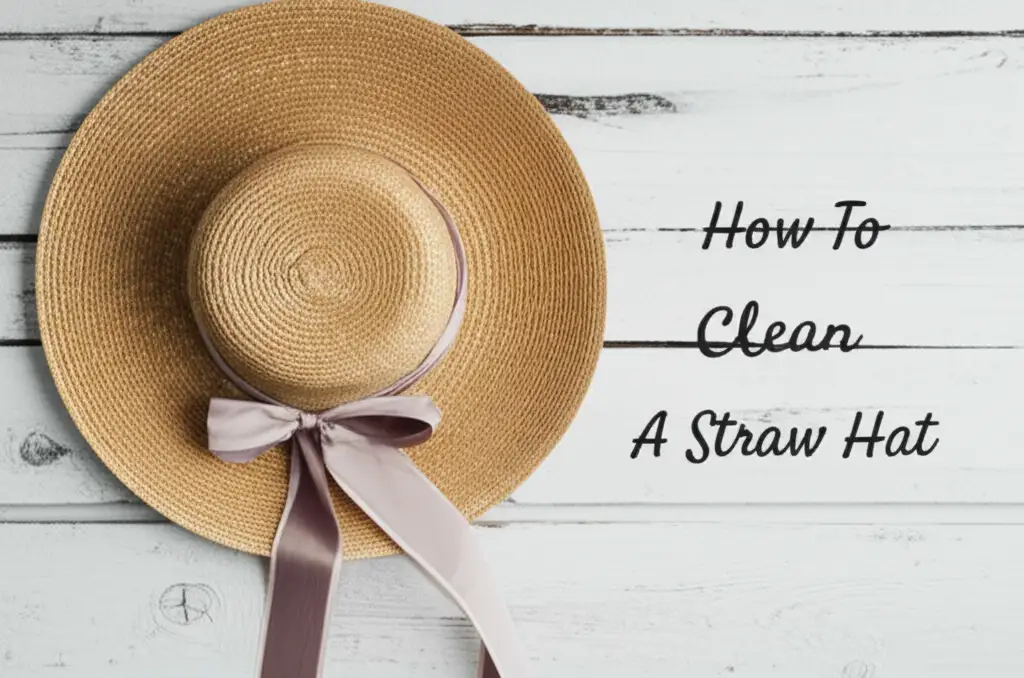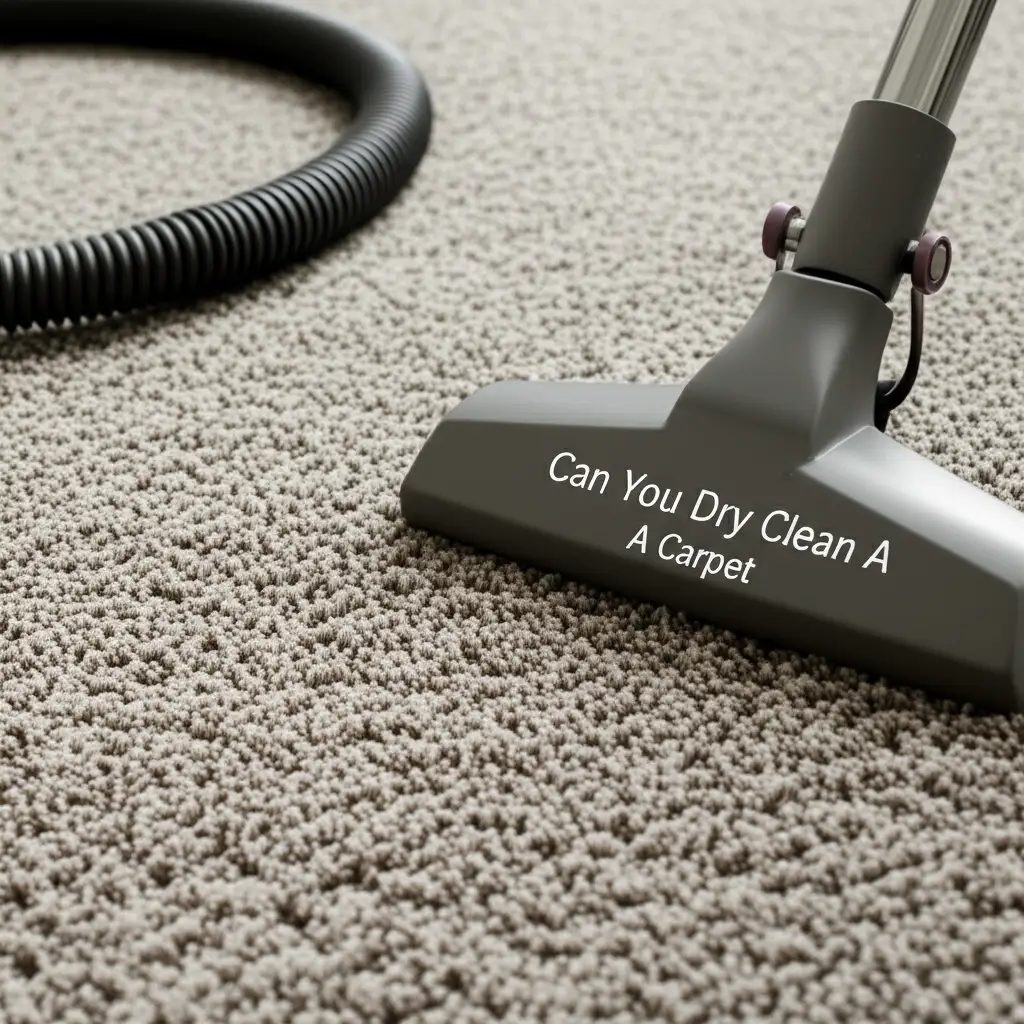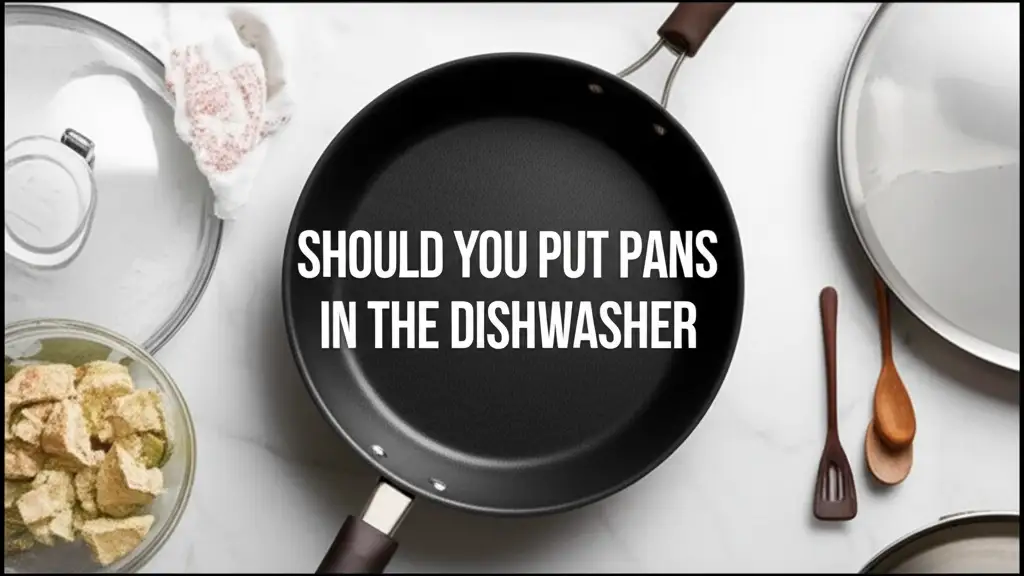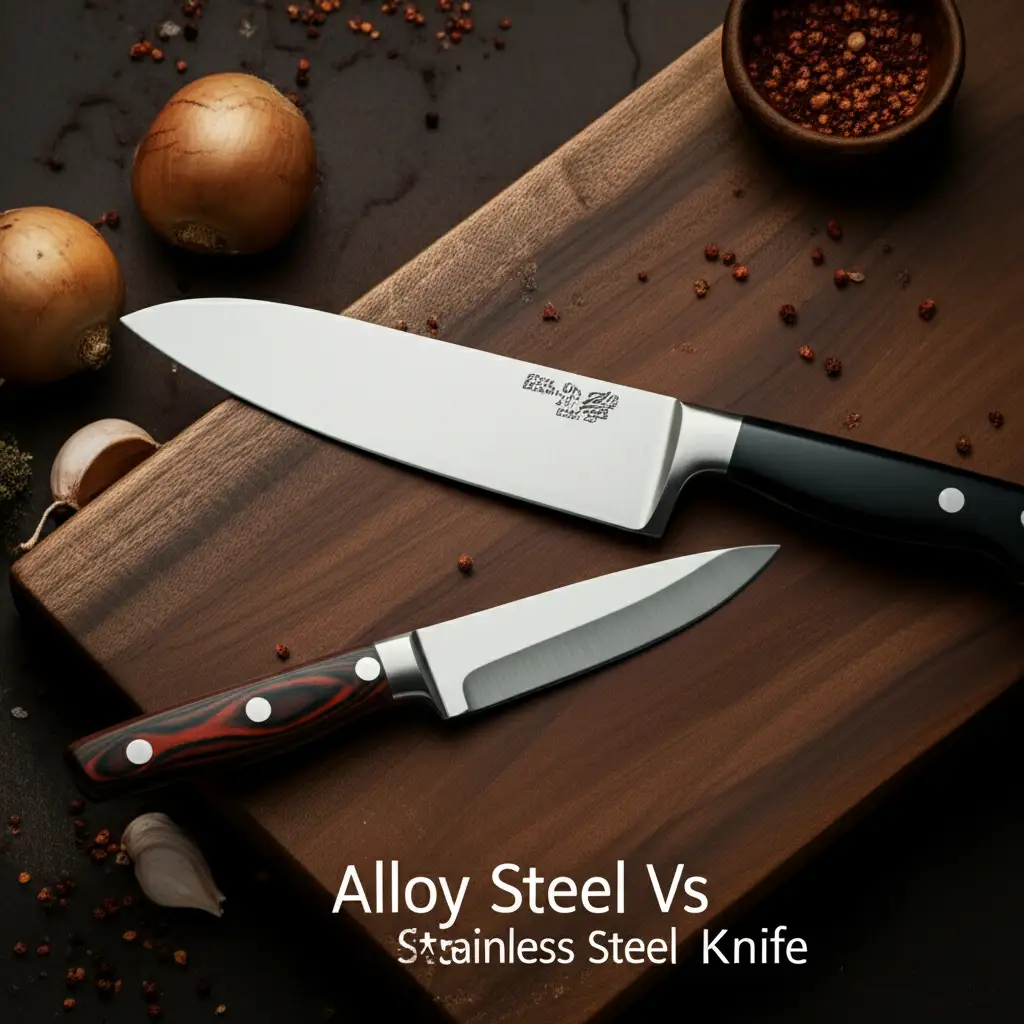· Elira Thomsen · Apparel Care · 17 min read
How To Clean A Straw Hat

How to Clean a Straw Hat: A Complete Guide
Summer days call for sunshine, outdoor adventures, and that perfect straw hat. Your straw hat keeps you cool and adds a touch of classic style. However, like any cherished item, hats get dusty, dirty, or even stained over time. Ignoring these issues can shorten your hat’s life.
Learning how to clean a straw hat is simple. It protects your investment and keeps you looking your best. This guide will walk you through everything. We cover different straw materials, what tools you need, general cleaning steps, and how to tackle stubborn stains. We also discuss proper drying and storage to ensure your hat stays in great shape for years to come.
Takeaway:
- Identify your straw hat’s material before cleaning.
- Use gentle methods and appropriate cleaning solutions.
- Address stains promptly with targeted spot cleaning.
- Always air dry your hat on a mold or form to keep its shape.
- Store your hat correctly to prevent damage and dirt buildup.
How do you clean a straw hat?
To clean a straw hat, first identify its material. Use a soft brush for dust. For dirt, gently wipe with a damp cloth and mild soap solution. Spot clean stains using targeted methods. Air dry the hat completely on a form to maintain its shape, avoiding direct heat or sunlight.
Understanding Your Straw Hat Material: The First Step to Cleaning Success
Before you even think about how to clean a straw hat, you must know what it is made of. Straw hats come in many types of materials. Each material has different needs when it comes to cleaning. Knowing your hat’s specific straw type helps you choose the safest and most effective cleaning method. This knowledge prevents damage during the cleaning process.
Natural straw hats are often woven from plants like raffia, toyo, sisal, or genuine Panama straw. These materials can be quite durable, but they are also absorbent. They can lose their shape easily if they get too wet. Paper straw, often called Toyo, is very delicate. It can fall apart or get damaged by too much water. Synthetic straw hats, made from man-made fibers, are generally more water-resistant and forgiving. They usually stand up to a bit more moisture. Always check for a care label inside your hat if possible. This label provides important instructions from the manufacturer. If no label exists, assume your hat is delicate and proceed with caution.
Knowing your straw type also guides your choice of cleaning solutions. For delicate paper straw, a very light touch with minimal moisture is key. Natural straw can handle a slightly damp cloth, but avoid saturating the material. Synthetic straw may allow for a bit more water. Always do a small patch test in an hidden area first. This check ensures the cleaning solution does not cause discoloration or damage. This simple step can save your hat from harm.
Gathering Your Tools: What You Need for a Gentle Clean
Having the right tools ready makes the cleaning process smooth and effective. You do not need many special items. Most of what you need is likely already in your home. These simple tools help you clean your straw hat gently and correctly. They ensure you remove dirt without harming the hat’s structure or color. Preparing your supplies before you start prevents interruptions.
First, you will need a soft-bristled brush. A clean, soft toothbrush works well for small areas. A lint brush or a soft clothing brush can handle larger surfaces. These brushes help remove loose dust and dirt without scratching the straw. Next, gather some clean cloths. Microfiber cloths or soft cotton rags are ideal. They are absorbent and non-abrasive. You will use these for applying solutions and blotting. A spray bottle, often a small one from cosmetics, is useful for misting water or cleaning solutions lightly. This avoids over-wetting your hat.
For cleaning solutions, mild soap is essential. Choose a gentle dish soap, baby shampoo, or a mild laundry detergent designed for delicates. Avoid harsh chemicals or strong detergents. These can strip the straw’s natural oils or cause discoloration. For specific stains, you might need a few extra items. Hydrogen peroxide, diluted, can help with light stains on light-colored hats. Cornstarch or baking soda are excellent for absorbing oil and grease stains. White vinegar or rubbing alcohol, diluted, can tackle mildew or some dirt stains. Finally, prepare a bowl for mixing solutions. Most important, have a hat form, an inflated balloon, or a tightly rolled towel ready. This item helps your hat keep its shape as it dries.
General Cleaning Methods: Keeping Your Straw Hat Fresh
Regular cleaning keeps your straw hat looking new and extends its life. Most of the time, your hat only needs light maintenance. These general methods address common dust and light grime. They are gentle and effective for routine care. Always work in a well-lit area to see dirt clearly. Take your time with each step to ensure thorough cleaning without rushing.
Dust and Loose Dirt Removal
Your straw hat picks up dust and loose dirt easily. The first step in any cleaning process is to remove these surface particles. This prevents them from becoming embedded deeper into the straw. Begin by taking your soft-bristled brush. Gently brush the entire surface of the hat. Use short, light strokes. Work in the direction of the straw’s weave. This lifts away dust and debris. Pay extra attention to the brim and the crown. These areas often collect the most dust. For very fine dust or lint, a lint roller can be helpful. Press it lightly against the hat’s surface. Then roll it to pick up any clinging particles. For very thorough dust removal, you can use a vacuum cleaner. Choose an upholstery attachment or a soft brush attachment. Set the vacuum to its lowest suction setting. Hover it just above the hat. Avoid direct contact that could pull at the straw. This method safely removes dust from hard-to-reach areas.
Spot Cleaning for Light Grime
Sometimes, your hat might have small smudges or light dirt spots. These do not require a full cleaning. Spot cleaning is the perfect solution for such areas. Prepare a very mild soap solution in a bowl. Mix a few drops of gentle dish soap or baby shampoo with a cup of cool water. Stir until a light foam appears. Dip a clean microfiber cloth into this solution. Wring out the cloth very well. It should be only slightly damp, not wet. Too much water can damage the straw. Gently dab the soiled area with the damp cloth. Do not rub hard. Rubbing can fray the straw or push the dirt deeper. Work in small sections. After applying the soap solution, rinse your cloth thoroughly with clean water. Wring it out again. Now, gently blot the same area with the clean, damp cloth. This step removes any soap residue. Continue blotting with a clean part of the cloth until the dirt is gone. Finish by blotting with a dry cloth to absorb excess moisture.
Deep Cleaning for More Soiled Hats (Use with Caution)
A deeply soiled hat may need more than just spot cleaning. However, approach deep cleaning with extreme caution. This method involves more moisture, which can be risky for some straw types. Only do this if your hat is quite dirty and milder methods fail. Start by lightly misting the entire hat with clean water from your spray bottle. Do not soak the hat. You just want the straw to be slightly damp. This helps to loosen dirt. Next, create a thicker foam from your mild soap solution. You can do this by agitating the soap and water mixture. Dip your clean cloth into the foam. Apply the foam to the dirty areas of the hat. Use a gentle dabbing motion. Do not scrub or rub vigorously. Work in small sections. Once you have applied the foam, take a separate clean, damp cloth. Gently wipe away the foam and dirt. Rinse the cloth often. Repeat this process until the hat appears clean. Always avoid getting the hat too wet. The goal is to clean the surface, not to soak the straw fibers. After cleaning, move straight to the drying stage.
Tackling Stubborn Stains: Specific Solutions for Common Issues
Stubborn stains can be frustrating. They often require more specific treatments than general cleaning. Knowing how to clean a straw hat with specific stain types helps you address them effectively. Always test any stain removal solution on an inconspicuous area first. This ensures it does not damage or discolor your hat. Act quickly when you notice a stain. The fresher the stain, the easier it is to remove.
Oil and Grease Stains
Oil and grease stains are common, especially on the brim or band area. These require an absorbent material to lift the oil. Begin by lightly sprinkling cornstarch or baking soda directly onto the oil stain. You can also use talcum powder. Make sure the powder completely covers the stained area. The powder will absorb the oil. Let the powder sit on the stain for several hours. For best results, leave it overnight. The longer it sits, the more oil it can absorb. After the waiting period, gently brush off the powder using your soft-bristled brush. You will likely see the powder has clumped or changed color. This means it has absorbed the grease. If the stain remains, repeat the process. Apply fresh powder and let it sit again. For very old or deep oil stains, you might need professional help. Avoid using water on oil stains before applying powder. Water can set the oil deeper into the straw.
Sweat and Dirt Stains
Sweat and dirt stains appear as dark lines or discolorations. These are very common around the hatband or brim. For light-colored straw hats, a solution of hydrogen peroxide and water works well. Mix one part hydrogen peroxide with two parts water. Dip a cotton swab or a clean cloth into this diluted solution. Gently dab the stained area. Do not rub, as this can spread the stain or fray the straw. Work from the outside of the stain inward. This prevents spreading the stain. For darker straw hats or if you prefer a different method, use your mild soap solution. Mix a few drops of mild soap with cool water. Dampen a clean cloth with this solution. Blot the stained area gently. After dabbing with either solution, take a clean, damp cloth. Blot the area to remove any residue. Finish by blotting with a dry cloth to absorb excess moisture. Let the hat air dry completely.
Mildew or Mold Stains
Mold or mildew can grow on straw hats if they are stored in damp conditions. These appear as fuzzy spots, often black or green. Address mold immediately to prevent it from spreading. First, take the hat outdoors. This prevents mold spores from spreading inside your home. Use a stiff brush, like a clean toothbrush, to gently brush off any dry, loose mold. Be careful not to inhale the spores. Next, prepare a cleaning solution. You can use diluted rubbing alcohol (one part alcohol to one part water) or white vinegar (one part vinegar to one part water). Dip a clean cloth or cotton ball into the solution. Wring it out well. Gently dab the affected areas. The solution helps to kill the mold. After dabbing, allow the hat to air out in a well-ventilated area. Avoid direct sunlight, as it can be too harsh for some straw types. Ensure the hat dries completely to prevent mold from returning. If the mold is extensive or deeply embedded, professional hat cleaning might be necessary. Never use bleach on straw hats. Bleach can cause irreversible damage and discoloration.
Drying Your Straw Hat Properly: Essential for Maintaining Shape
Proper drying is one of the most critical steps after you clean a straw hat. If you dry your hat incorrectly, it can lose its shape. It can also become brittle or even grow mold. You must allow the straw to dry slowly and evenly. This helps it retain its original form and structure. This stage prevents many common hat care problems. Rushing the drying process often leads to issues.
Never place your straw hat in direct sunlight to dry. The sun’s intense heat can make the straw brittle. It can also cause the hat to shrink or distort. Avoid using artificial heat sources like hair dryers, radiators, or clothes dryers. These also provide too much heat. High heat can damage the straw fibers. It can also make them crack or become discolored. Instead, opt for air drying in a cool, well-ventilated area. A shaded spot outdoors on a breezy day works well. An indoor room with good air circulation is also fine.
To maintain your hat’s original shape, place it on a hat form while it dries. If you do not have a hat form, an inflated balloon works perfectly for the crown. You can also use a tightly rolled towel placed inside the crown. Ensure the towel is clean and dry. For the brim, lay the hat flat on a clean, dry surface. You can also place it upside down on its crown. This position helps the brim dry flat. If the brim needs reshaping, gently mold it while it is slightly damp. Allow the hat to dry completely before wearing or storing it. This can take anywhere from 12 to 24 hours, or even longer for very thick straw. Check for any dampness by touching the inside and outside of the hat. Ensure it is bone dry before handling further. If the hat is still damp, mold can easily form again.
Reshaping and Restoring Your Straw Hat: Bringing Back Its Best Look
Even with careful cleaning, your straw hat might lose some of its original shape over time. This happens from wear, improper storage, or getting wet. Knowing how to reshape your straw hat can bring it back to life. This process helps your hat look new again. It also saves you from buying a replacement. Reshaping works best when the straw is slightly damp.
While your hat is still a little damp from cleaning, gently begin to reshape it. Focus on the brim and the crown. Use your hands to carefully mold the straw. Coax it back into its desired form. For the crown, use your hat form, balloon, or stuffed towel. Push gently from the inside to re-establish the crown’s height and curves. For the brim, hold it firmly. Then, use your fingers to flatten out any waves or bends. If your brim has a specific curve, like a cowboy hat, gently bend it into place. Hold it there until it starts to dry in that position. You can use clips or weights to help hold the shape as it dries.
For minor dents or wrinkles, steam can be a great help. You can use a clothing steamer or the steam from an iron. Hold the hat a safe distance from the steam source. Allow the steam to gently moisten the affected area. Do not let the hat get soaking wet. The steam makes the straw more pliable. Once the area is warm and slightly soft, gently reshape it with your hands. Work slowly and carefully. Let the hat cool and dry completely on its form to set the new shape. For significant damage, such as a completely crushed crown or a severely bent brim, professional hat shapers may be the best option. They have specialized tools and expertise to restore hats without causing further damage. Trying to fix major damage yourself can sometimes worsen the problem.
Maintaining Your Straw Hat: Preventing Future Cleaning Headaches
Cleaning your straw hat is important, but preventing it from getting too dirty is even better. Good maintenance habits keep your hat looking good longer. They also reduce how often you need to clean it. Proper care extends the life of your straw hat significantly. It ensures your hat stays a favorite accessory for many seasons. These simple tips can make a big difference.
Regular brushing is the simplest form of maintenance. After each wear, use a soft-bristled brush or lint roller. Gently brush off any dust, lint, or loose dirt that has settled on the hat. This prevents dirt from embedding into the straw fibers. It keeps your hat looking fresh day-to-day. A quick brush takes only a few seconds. It makes a big impact on cleanliness.
Storage is key to protecting your straw hat. Never just toss your hat into a closet or pile it under other items. This can crush the straw and ruin its shape. Ideally, store your straw hat on a hat stand. A hat stand helps the crown and brim keep their form. If you do not have a hat stand, use a hat box. A hat box protects the hat from dust and accidental crushing. You can also stuff the crown with acid-free tissue paper before placing it in the box. This provides support. Store hats in a cool, dry place. Avoid damp areas, like basements, where mold can grow. Protect your straw hat from rain and excessive moisture. Straw hats are not meant for heavy rain. If your hat gets caught in a light drizzle, let it air dry completely before storing. Reshape it as it dries. When handling your hat, always pick it up by the brim or the base of the crown. Avoid pinching the crown, as this can cause dents or creases over time. Following these simple maintenance tips will keep your straw hat in top condition.
FAQ Section
Can I wash a straw hat in the washing machine? No, you should never wash a straw hat in a washing machine. The machine’s agitation and water saturation will cause the straw to lose its shape, unravel, or become brittle. It can lead to irreversible damage. Always clean straw hats by hand with gentle methods.
How often should I clean my straw hat? Clean your straw hat as needed. If you wear it often, a light brushing after each use is good. Deep cleaning or spot cleaning is only necessary when you notice visible dirt or stains. Regular maintenance prevents the need for frequent deep cleaning.
What if my straw hat gets wet in the rain? If your straw hat gets wet in the rain, do not panic. Gently shake off excess water. Then, place the hat on a hat form, an inflated balloon, or a rolled towel to maintain its shape. Allow it to air dry completely in a cool, well-ventilated area away from direct heat or sunlight.
Can I use bleach on a straw hat? No, do not use bleach on a straw hat. Bleach is a harsh chemical that will damage the straw fibers. It can cause them to become brittle, discolored, or even disintegrate. Always use mild soaps and natural solutions for cleaning.
How do I get rid of the smell in my straw hat? To remove smells, first ensure the hat is dry. Place it in a well-ventilated area for several hours. For stronger odors, sprinkle baking soda inside the crown and band. Let it sit overnight to absorb smells. Then, brush off the baking soda.
Is it okay to use hairspray on a straw hat to stiffen it? Using hairspray on a straw hat is not recommended. Hairspray can leave a sticky residue that attracts dust and dirt. It can also stiffen the straw unevenly or cause it to become brittle over time. If you need to stiffen your hat, look for products made for hats.
Conclusion
Learning how to clean a straw hat ensures it remains a stylish and functional part of your wardrobe. We have covered the crucial steps: understanding your hat’s material, gathering the right gentle tools, and applying effective cleaning methods for both general dirt and stubborn stains. Proper drying on a form is essential for maintaining the hat’s shape. Consistent care and smart storage prevent many future cleaning needs.
By following these simple guidelines, you protect your straw hat from damage and wear. You keep its original beauty and structure intact. A well-maintained straw hat is a joy to wear for many seasons to come. So, go ahead, give your favorite straw hat the care it deserves. Enjoy your adventures in style with a hat that looks as good as new.





